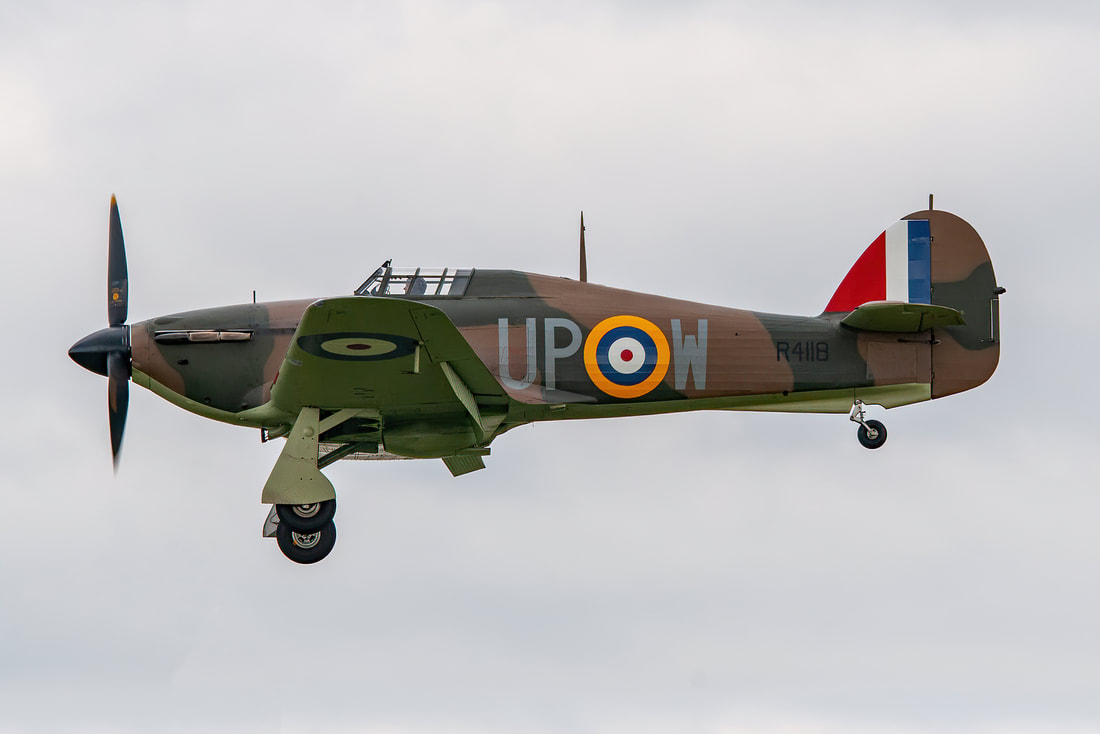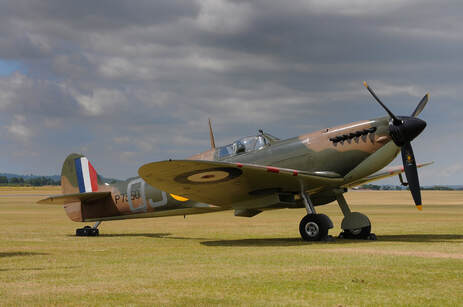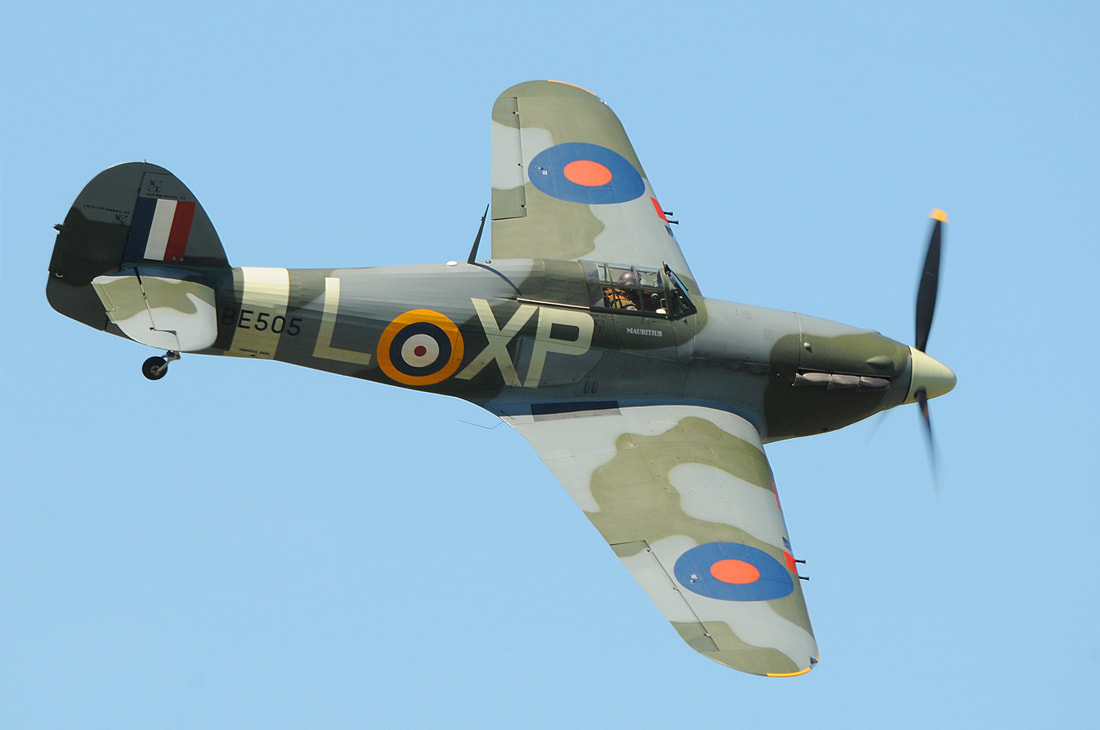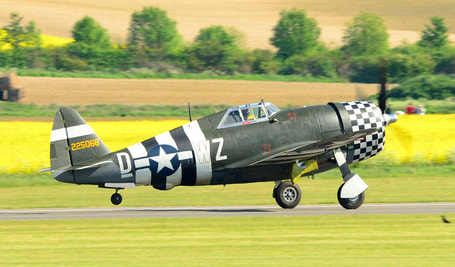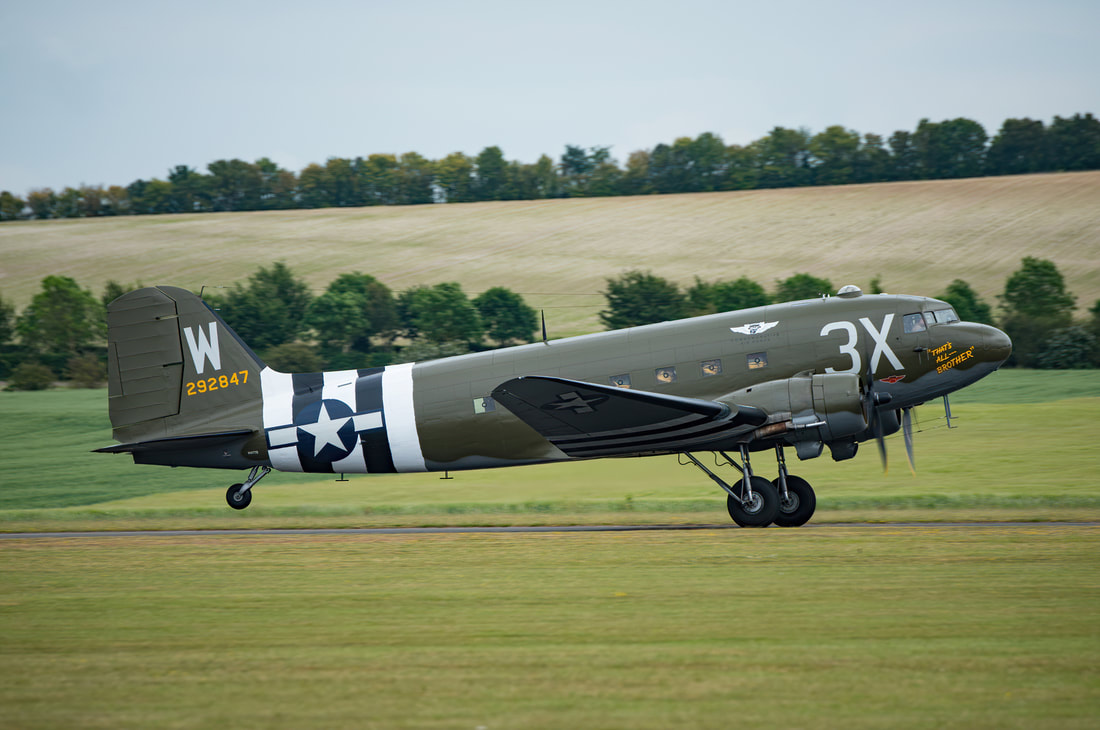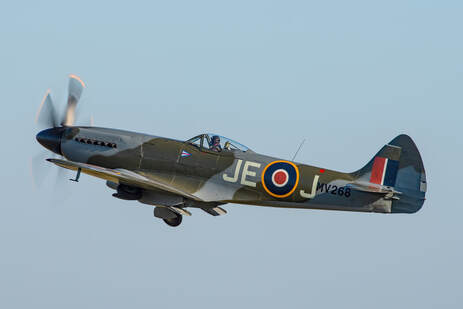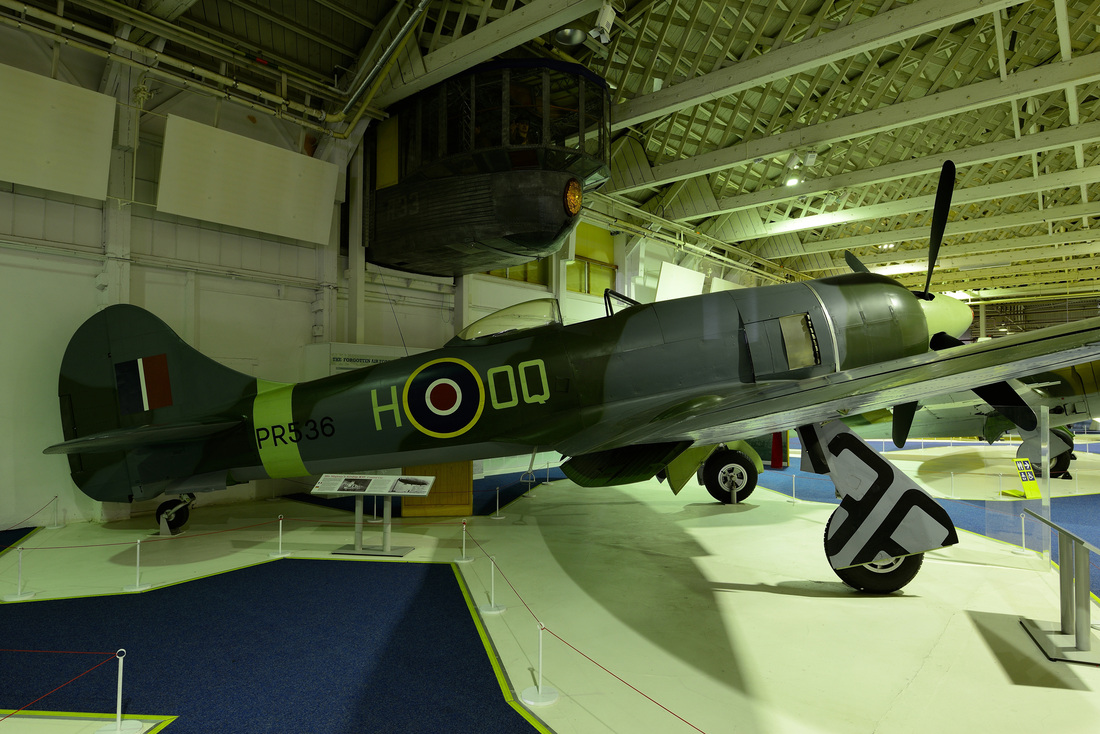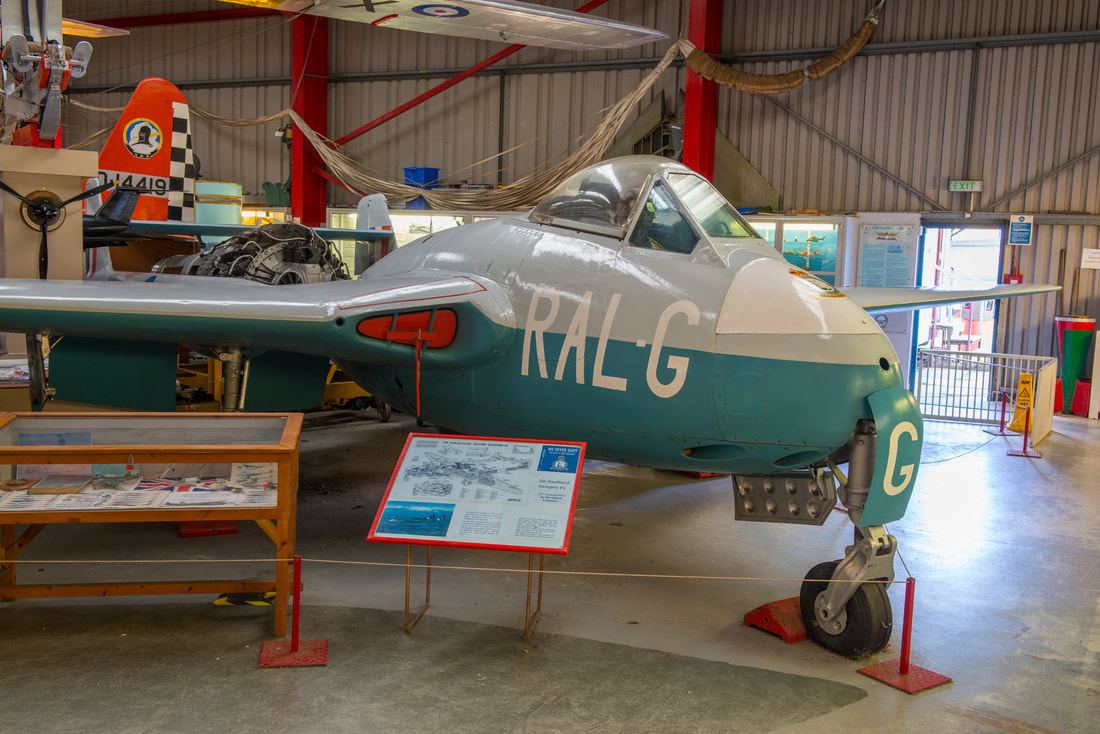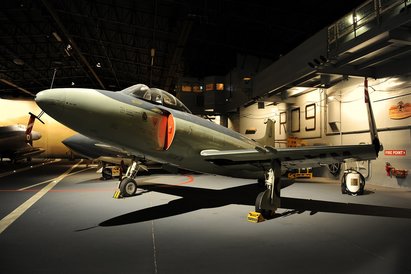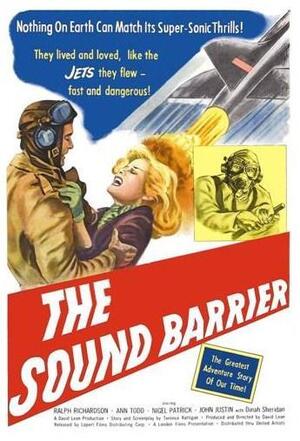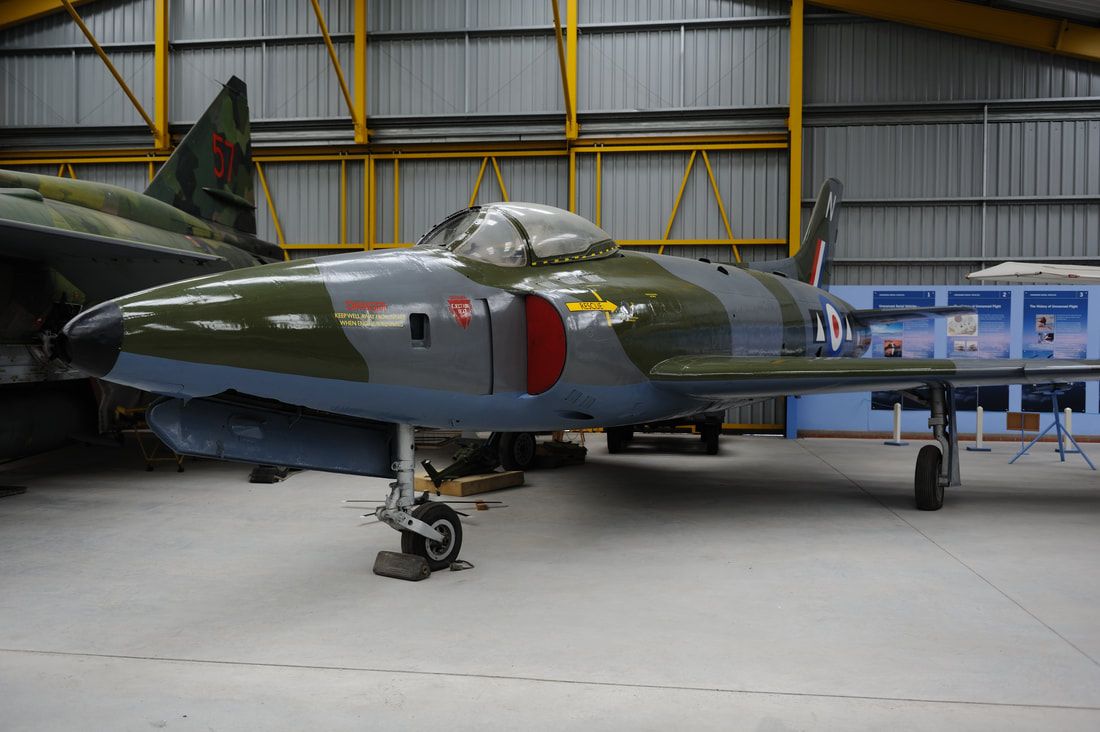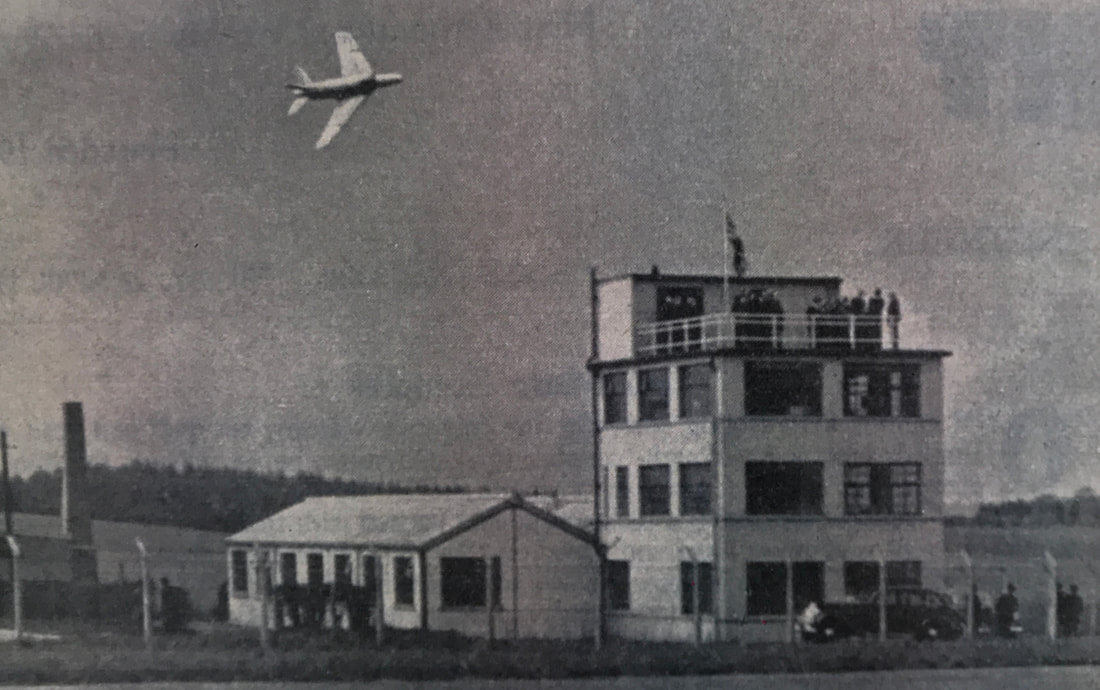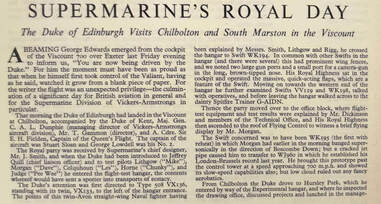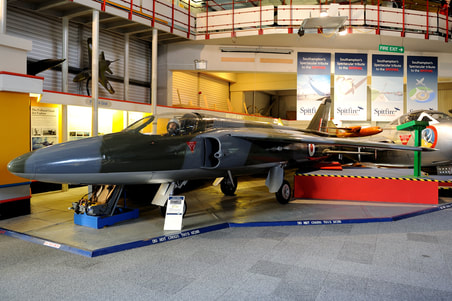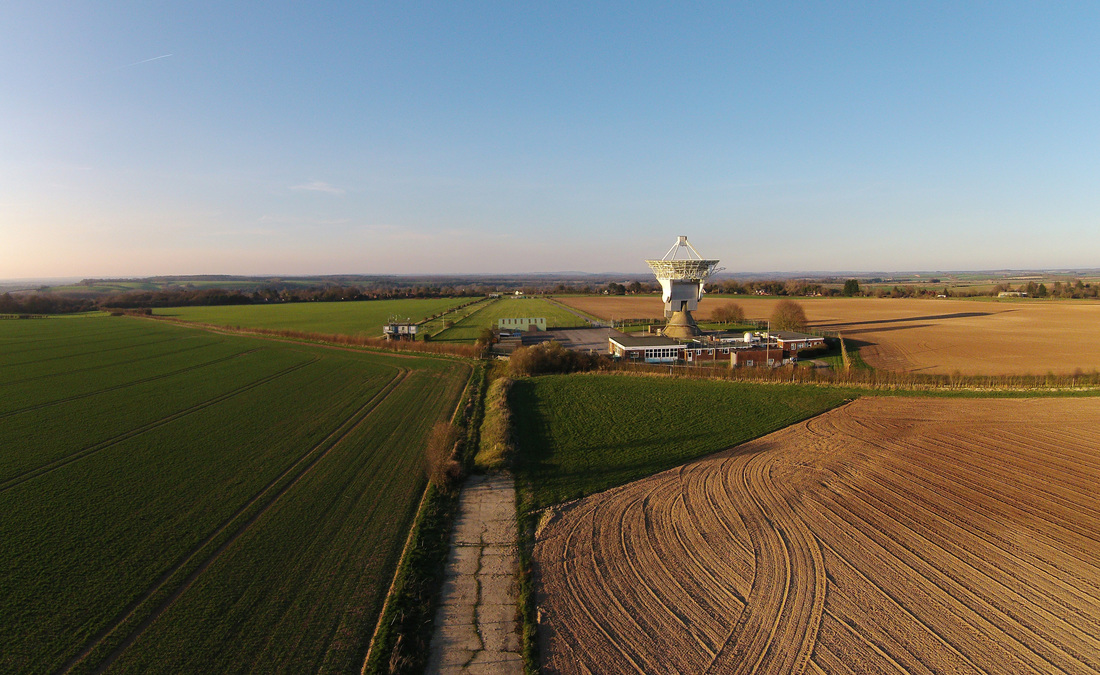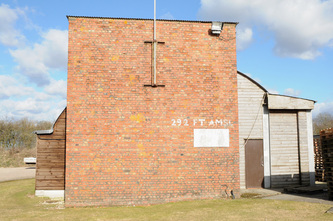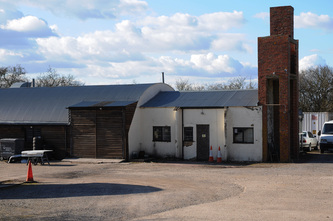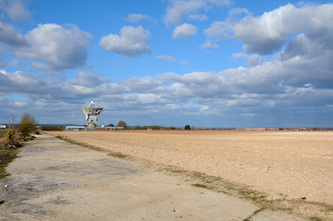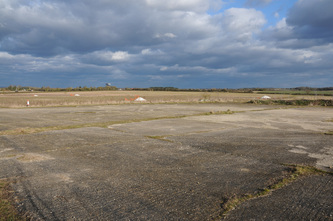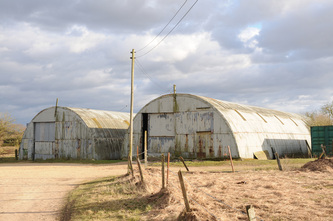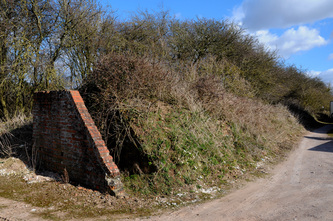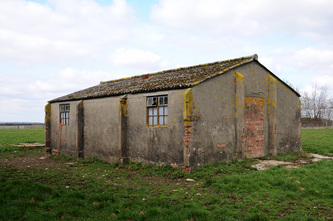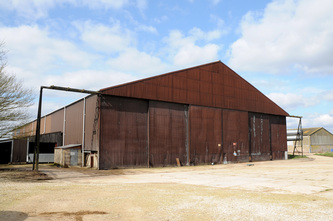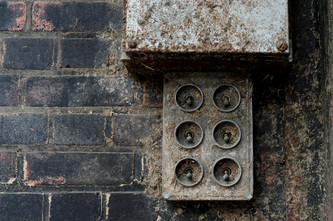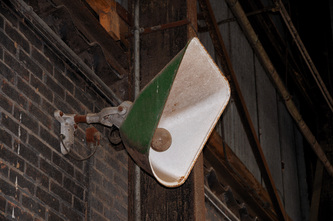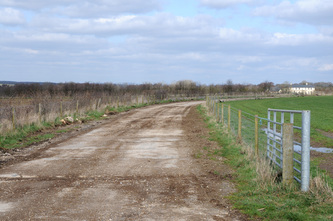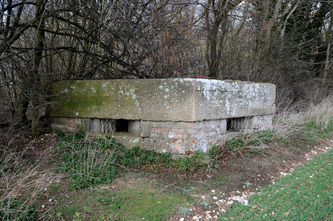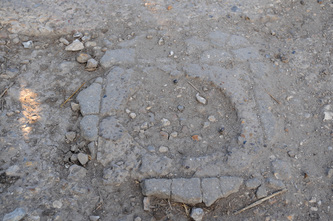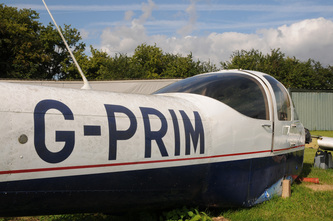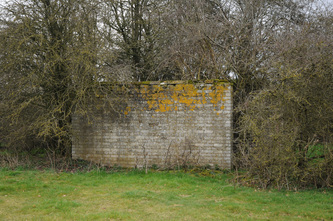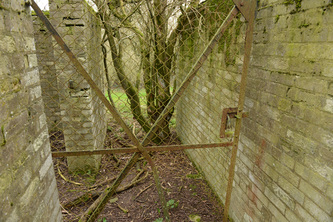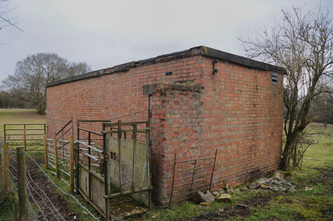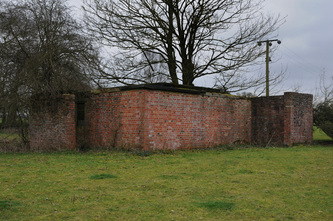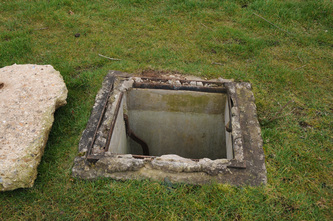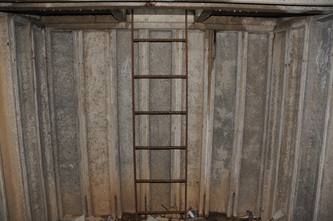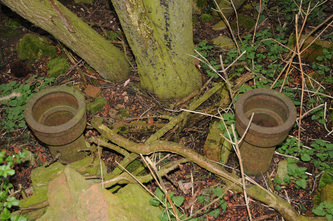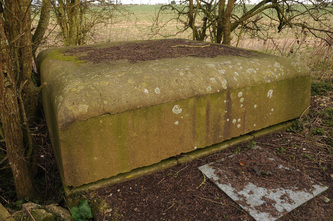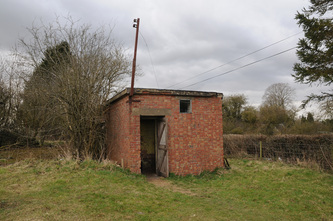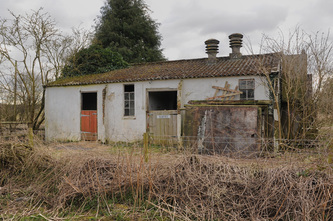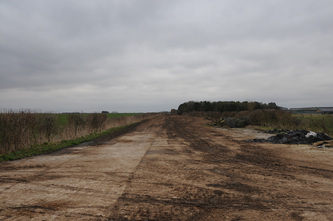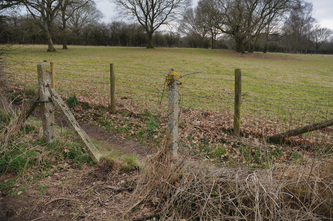RAF Chilbolton
USAAF Station No 404
Click here for the Mystery of the Luftwaffe Plate
Written by Richard Hall
Airfield Code Letters - CI
RAF Chilbolton, not a name that springs to many a person's mind, mention Middle Wallop, Boscombe Down, and maybe even Andover, and you are more likely to get a flicker of recognition of the important role these airfields played in World War Two.
Chilbolton is situated 91 metres high on a plateau in the heart of the Hampshire countryside. Many who drive along the Roman road from Sutton Scotney to Stockbridge in Hampshire will note the impressive radio telescope, but few will know that it is built on the disused runway. Chilbolton played its part during the war and later became one of the airfields from which the genesis of jet aviation was born. The site ended its day's test flying some well known Vickers-Armstrong and Folland designs, which appeared in the post-war era.
The purpose of this article is to give a brief history of the airfield's operational flying days and an idea of what can now be seen in the present day.
Then
Chilbolton began life as a small grass airstrip used by a Mr Freddie Cameron to land his private aircraft while visiting his mother at Three Ways Cottage. Work started in 1938 on leveling 145 acres of land to allow construction of the airfield. The site was intended to act as a dispersal site for the bomber base being built at Middle Wallop. By the time the work was finished, Middle Wallop was a Fighter Command Sector Station for 10 Group. To relieve the pressure at the airfield during the Battle of Britain, Hurricane Is of 238 Squadron were dispersed under the command of Sqn Ldr H A Fenton. The Hurricanes flew from Middle Wallop to their new home on 30 September 1940, a short flight of some 5 miles as the crow flies. The skies in the area were rather busy at this time with Andover, Middle Wallop, Old Sarum, Boscombe Down, Worthy Down and Chattis Hill all in close proximity flying wise, much reliance on the Mark One eyeball is suspected.
Written by Richard Hall
Airfield Code Letters - CI
RAF Chilbolton, not a name that springs to many a person's mind, mention Middle Wallop, Boscombe Down, and maybe even Andover, and you are more likely to get a flicker of recognition of the important role these airfields played in World War Two.
Chilbolton is situated 91 metres high on a plateau in the heart of the Hampshire countryside. Many who drive along the Roman road from Sutton Scotney to Stockbridge in Hampshire will note the impressive radio telescope, but few will know that it is built on the disused runway. Chilbolton played its part during the war and later became one of the airfields from which the genesis of jet aviation was born. The site ended its day's test flying some well known Vickers-Armstrong and Folland designs, which appeared in the post-war era.
The purpose of this article is to give a brief history of the airfield's operational flying days and an idea of what can now be seen in the present day.
Then
Chilbolton began life as a small grass airstrip used by a Mr Freddie Cameron to land his private aircraft while visiting his mother at Three Ways Cottage. Work started in 1938 on leveling 145 acres of land to allow construction of the airfield. The site was intended to act as a dispersal site for the bomber base being built at Middle Wallop. By the time the work was finished, Middle Wallop was a Fighter Command Sector Station for 10 Group. To relieve the pressure at the airfield during the Battle of Britain, Hurricane Is of 238 Squadron were dispersed under the command of Sqn Ldr H A Fenton. The Hurricanes flew from Middle Wallop to their new home on 30 September 1940, a short flight of some 5 miles as the crow flies. The skies in the area were rather busy at this time with Andover, Middle Wallop, Old Sarum, Boscombe Down, Worthy Down and Chattis Hill all in close proximity flying wise, much reliance on the Mark One eyeball is suspected.
|
The next day A Flight of 238 Squadron were engaged in intercepting a Luftwaffe raid over Poole. Plt Off Bob Doe had recently joined the squadron and stated that he fired upon an Focke Wulf FW200 Condor. This is of interest as there appears to be no official clarification that this type of aircraft took part in the battle over England, but there were several sightings. During this engagement, Doe destroyed a Messerschmitt Me 110, but the unit lost two Hurricanes. Plt Off Covington's aircraft was destroyed by cannon fire, with the pilot managing to bail out near Sherbourne.
|
Sgt Sibley, however, was not so lucky as he was reported missing after combat with enemy fighters over Poole Harbour. Neither he nor his Hurricane, P3599, were ever found, and he is remembered on the Runnymede Memorial.
On 5 October 1940, 12 of the unit's Hurricanes were patrolling near Middle Wallop. Heading to the north, they were attacked from astern by 15 Messerschmitt Me 109s, resulting in losing one of their number (P3611). The pilot Sgt McLaughlin baled out and was admitted to Shaftesbury Hospital suffering from multiple burns. The squadron's Hurricanes had no chance to respond to the attack and landed back at Chilbolton, no doubt considering themselves lucky to have survived the encounter with just one loss. Of note, on this day, the ORB states that Doe received the DFC for downing 12 enemy aircraft over the preceding weeks.
On 5 October 1940, 12 of the unit's Hurricanes were patrolling near Middle Wallop. Heading to the north, they were attacked from astern by 15 Messerschmitt Me 109s, resulting in losing one of their number (P3611). The pilot Sgt McLaughlin baled out and was admitted to Shaftesbury Hospital suffering from multiple burns. The squadron's Hurricanes had no chance to respond to the attack and landed back at Chilbolton, no doubt considering themselves lucky to have survived the encounter with just one loss. Of note, on this day, the ORB states that Doe received the DFC for downing 12 enemy aircraft over the preceding weeks.
As winter approached, Luftwaffe raids diminished, and by the end of the Battle of Britain, the squadron had lost 17 Hurricanes. 238 left Chilbolton in January 1941 and returned to Middle Wallop. They were back at the airfield between February to April 1941 to convert to the Hurricane IIA, leaving again in April for Pembrey before returning to be stood down in May 1941 in preparation for deployment to the Far East.
Upgrading work was also taking place in 1941 with the construction of a tarmac perimeter track, hard standings and three blister hangars. In addition, a technical site was built, along with blast pens and several dispersed living sites, that would eventually accommodate 2,800 personnel. The field remained as a grass strip with no permanent squadrons based there, but there was no shortage of activity.
|
With the departure of 238 Squadron, the next unit to arrive were the Poles of 308 (Krakow) Squadron, who brought in their Spitfire IIa fighters from Baginton, under the command of Sqn Ldr Orzechowski.
Their stay was short, with departure coming in June 1941 to Northolt. On the 25th of the month, 501 (County of Gloucester) Squadron arrived from Colerne with 19 Spitfire IIAs. The unit was commanded by Sqn Ldr A H Boyd DFC and Bar. |
During their time at Chilbolton, the squadron flew convoy and night fighting patrols, one of the latter was to achieve success on 7/8 July 1941. On this night, four Spitfires took off, and during the patrol, a Junkers Ju 88 was claimed by Boyd. This was to be the squadron's first night victory. A move for the unit to Ibsley in the New Forest came on 5 August 1941. Coming after for a brief two-week stay were the Hurricane IIBs of 504 (County of Nottingham) Squadron, who then left to take up residence at Ballyhalbert in Northern Ireland.
|
In September of the same year, 245 (Northern Rhodesia) Squadron arrived with their Hurricane IIBs commanded by Sqn Ldr W F Blackadder. Before their departure to Middle Wallop in December 1941, the unit undertook offensive operations (Roadsteads) over Northern France.
Typical of the type of operations that were being undertaken at the time is reflected in the squadron's Record of Events within their ORB for September 1941, an extract of which is shown below. |
An offensive sweep (Mandolin No 4) was carried out today by Flt Lt Chaffe (BD984) and Lt Kristiansen (Royal Norwegian Air Force) (Z3092). They took from Iblsey at 12.00 hours and crossed the French coast around 12.40 hour, a little to the east of Arromanches les Bains. They soon came down to 0 feet and followed the railway to Bayeux where goods trains in the station sidings were attacked and damaged. On breaking away into cloud the two aircraft became separated and continued the sortie separately. Flt Lt Chaffe circuled the Forest des Biards but could find nothing to attack. He saw, however, some camouflaged building south-east of the forest near a quarry. Turning east and Cranilly he dived on five Ju 87s in a field but his shells, while striking the enemy the E.A. appeared to have little effect on them, and it is possible they were dummies. Having by then flown for 32 minutes over France the pilot turned for home and landed at 14.05 hours. Lt Kristiansen meanwhile, carried out attacks on goods trains at St Lo and possible Carpiquet. At the second place two petrol waggons caught alight after a one second burst and flames 50 feet high shot into the air. After 30 minutes over France the pilot recrossed the coast and landed safely at Chilbolton at 14.10 hours. Two attempts were made by Plt Off Hawkins (BD980) and 2/Lt Christie (BD955) to carry out Mandolin No 3 but the weather was unsuitable and they were forced on each occasion to turn back after flying well out over the channel.
The dangers of wartime flying did not extend just to those flying operational sorties as on the same day as the above was taking place, a training accident was to claim the life of one of the squadron's pilots. At 19.30hrs, while practising night flying 2/Lt Erickssen (RNAF) and Sgt Banikhin collided in mid-air near Stockbridge. The former crashed and was killed. However, with a damaged Hurricane, Banikhin managed to land at Middle Wallop.
Just three days before Plt Off, Herrick and Hutchinson had taken off on a weather test and a few miles east of Chilbolton collided. At 500 feet, both aircraft came to earth, bursting into flames and killing both pilots. In the space of just a few days, the squadron had lost three pilots through accidents.
The dangers of wartime flying did not extend just to those flying operational sorties as on the same day as the above was taking place, a training accident was to claim the life of one of the squadron's pilots. At 19.30hrs, while practising night flying 2/Lt Erickssen (RNAF) and Sgt Banikhin collided in mid-air near Stockbridge. The former crashed and was killed. However, with a damaged Hurricane, Banikhin managed to land at Middle Wallop.
Just three days before Plt Off, Herrick and Hutchinson had taken off on a weather test and a few miles east of Chilbolton collided. At 500 feet, both aircraft came to earth, bursting into flames and killing both pilots. In the space of just a few days, the squadron had lost three pilots through accidents.
In April 1942, Chilbolton became a full satellite within 10 Group. The airfield was also used as a relief landing ground for the Tomahawks of 41 Operational Training Unit (OTU) based at Old Sarum. This unit stayed until November 1942, after which the site was transferred to 70 Group and placed under Care and Maintenance. In December, 38 Wing took over the airfield, and it was designated as a satellite to Netheravon. The Tiger Moths of the Night Flying Flight of the Glider Pilots Exercise Unit then moved in, staying until June 1943.
In June 1943, the airfield reverted to 10 Group, and further upgrading took place, including the construction of concrete runways, orientated through 12-30 (5,400ft), 02-20 (4,800ft) and 07-25 (4,200ft). Two T.2 hangers were constructed, the tarmac peri-track was strengthened, and 48 loop hardstandings were built. A bomb dump and ammunition store were constructed off of the south side of the airfield. During this upgrading work, Chilbolton was selected as home to an aircraft maintenance depot established on the north/east side of the site. In December 1943, a new unit arrived, the 5th Tactical Air Depot (5 TAD) of the USAAF Ninth Air Force.
In June 1943, the airfield reverted to 10 Group, and further upgrading took place, including the construction of concrete runways, orientated through 12-30 (5,400ft), 02-20 (4,800ft) and 07-25 (4,200ft). Two T.2 hangers were constructed, the tarmac peri-track was strengthened, and 48 loop hardstandings were built. A bomb dump and ammunition store were constructed off of the south side of the airfield. During this upgrading work, Chilbolton was selected as home to an aircraft maintenance depot established on the north/east side of the site. In December 1943, a new unit arrived, the 5th Tactical Air Depot (5 TAD) of the USAAF Ninth Air Force.
|
The airfield was now known as Station 404. The 5 TAD were joined in March 1944 by the 368th Fighter Group 9th USAAF, who flew in from their previous home at Greenham Common. . The engine note at Chilbolton now changed from the harsh sound of the Rolls-Royce Merlin to the more mellow tones of the Pratt & Whitney Double Wasp R-2800 radial engine. The 368th consisted of the 395th, 396th and 397th squadrons flying Republic P-47 Thunderbolts (nicknamed 'The Jug'). The fighters were involved in relentless softening up attacks in France prior to the invasion.
|
On D-Day itself and after Chilbolton's three squadrons were in action in support of the Allied invasion. On 19 June 1944, the P-47s left for new bases in France. This quiet period probably pleased the local residents of Chilbolton as this was a time of intense aerial activity. Less pleased would have been the Germans who would be on the receiving end of more locally based Jugs. One flight that was headed for Chilbolton from France in July 1944 did not reach its intended destination. Further details can be found here - Ampfield Memorial
|
Following the departure of the P-47s to France, the locals had a short respite until Douglas C-47s arrived at the airfield, bringing back wounded from the Continent for transfer to a large hospital located near Stockbridge.
On 11 September 1944, the 442nd Troop Carrier Group (TCG) moved in from Boreham, and by the next day, were undertaking supply flights to Normandy. The 442 TCG consisted of three units the 303rd, 304th and 305th Troop Carrier Squadrons (TCS). |
Three days after the trio of squadrons arrived at Chilbolton, the base was sealed as troops of the 501st and 506th Parachute Infantry Regiments (PIR) arrived at the airfield, in preparation for Operation Market Garden. On 17 September, 45 C-47s from the 442nd TCG took off and dropped the 501st PIR near Veghel. A second wave flown by 442 followed, and the 506th PIR was delivered to a drop zone near Zon. The next day the unit towed Hadrian gliders to the Nijmegen area, after which they transferred to Greenham Common. The operation ultimately failed due to the Allies overextending themselves and with stiffer resistance than anticipated being met. Any chance of the war being over by Christmas had now evaporated. This entire episode became known as a Bridge Too Far, which became the subject of
an epic film made in 1977.
The war was drawing near to ending, but Hitler still had some surprises up his sleeve. In December 1944, the Germans launched their last offensive in the West with an attack through the Ardennes, which caught the Allies completely off guard. The plan was to drive an attack through to the port of Antwerp, thus cutting off the Allied supply route. Bad weather hampered Allied air operations, and in what was to become known as the Battle of the Bulge, initial advances were made, but the Allies prevailed and pushed the offensive back. As weather conditions improved, Bomber Command aircraft equipped with the new blind bombing aid G-H struck at enemy troop positions in Belgium and rail infrastructure behind the battlefront. This action impeded the Germans from moving reinforcements and ultimately led to Hitler's last gamble in the West failing. The German's capacity to fight was now severely depleted, and they were unable to make good their losses. Chilbolton's participation in the Battle of the Bulge came on Christmas Day 1944 when an armada of C-47s arrived to transport the 17th Airborne Division to assist in the fight in the Ardennes.
an epic film made in 1977.
The war was drawing near to ending, but Hitler still had some surprises up his sleeve. In December 1944, the Germans launched their last offensive in the West with an attack through the Ardennes, which caught the Allies completely off guard. The plan was to drive an attack through to the port of Antwerp, thus cutting off the Allied supply route. Bad weather hampered Allied air operations, and in what was to become known as the Battle of the Bulge, initial advances were made, but the Allies prevailed and pushed the offensive back. As weather conditions improved, Bomber Command aircraft equipped with the new blind bombing aid G-H struck at enemy troop positions in Belgium and rail infrastructure behind the battlefront. This action impeded the Germans from moving reinforcements and ultimately led to Hitler's last gamble in the West failing. The German's capacity to fight was now severely depleted, and they were unable to make good their losses. Chilbolton's participation in the Battle of the Bulge came on Christmas Day 1944 when an armada of C-47s arrived to transport the 17th Airborne Division to assist in the fight in the Ardennes.
|
Chilbolton returned to the RAF on 1 March 1945, and 41 OTU arrived with Hurricanes, Spitfires and Martinets on its strength. The war in Europe ended on 8 May 1945. On the 23rd, 16 Mustang Is led by Sqn Ldr Roberts DFC of 26 Squadron arrived from Harrowbeer. In June 1945, the squadron was destined to convert to the Griffon powered Spitfire XIV, but the ORB for this period states the aircraft were still in the hangars at Chilbolton, the first three having arrived on the 3 June. Towards the middle of the month, pilots were flying the Spitfire. One managed to take an inch off the propellor due to lifting the tail too high on take off. However, this did not deter the pilot, who went on to complete a one hour flight.
|
41 OTU disbanded on 26 June, their role taken over by 61 OTU, then located at Keevil. Chilbolton now became a forward airfield in the Middle Wallop sector of 11 Group. The resident 26 Squadron remained at the site until August 1945, with a move made to Schleswig by the 21st of the month. Their place was taken by 247 Squadron, who at the time was converting from Typhoon IBs to Bristol Centaurus powered Tempest IIs. Joining 247 in November 1945, 183 Squadron also traded in their Spitfire IXs for the Tempest II.
|
With the war in the Far East still underway, plans were made for 183 and 247 Squadrons to join Tiger Force as the first Tempest II Wing. The deployment was to be under the command of Wg Cdr Roland Beamont.
However, the war ended, so the Wing remained at Chilbolton taking part in the Battle of Britain Flypast in September 1945. No 183 Squadron renumbered to 54 Squadron and converted pilots destined for the Middle East. |
The jet age came to Chilbolton on 11 September 1945 when a Gloster Meteor III visited to demonstrate to the Swedish Air Force Commander in Chief who was interested in possible procurement of the aircraft. However, it would appear that the Meteor did not make much of an impression on the C in C. Sweden only purchased three T.7 Meteor variants for target towing duties.
|
On 14 March 1946, 247 Squadron received its first De Havilland Vampire F.1s under the command of Sqn Ldr J H Bryant DFC. No 54 Squadron left Chilbolton on 26 June 1946, with 247 following two days later. This left no flying units at the airfield and started a slow rundown with the clearance of equipment.
Chilbolton became a sub-site of 3 Maintenance Unit (MU) based at Didcot. Surplus RAF equipment was stored in the hangars and other buildings until it was disposed of around June 1948. |
Other stores were forthcoming in the form of ammunition, responsibility for which was taken by 202 MU from April 1950 until the RAF finally severed its links with the site in June 1954. While the above was going on, Chilbolton moved onto the next stage of its life. This was the start of the early testing and development of jet-powered aircraft. During this time, many well-known Test Pilots came to the airfield, including John Derry, Mike Lithgow, Teddy Tennant, Dave Morgan, and Jeffrey Quill. An age was entered where the early jet test pilots took significant risks in an area of aeronautics that was not yet fully understood at this stage of jet development. February 1947 saw Vickers Armstrong (of which Supermarine was part) move in from High Post, with the 1950s witnessing various Supermarine fighter prototypes appearing at Chilbolton. Construction of the aircraft had been undertaken at Hursley Park and included Types 508, 529, 525 and 535.
|
Test flying the early jets was not without its perils, and losses began to mount up as pilots tried ever harder to prove their aircraft were worthy of squadron use. One such instance of a loss occurred on 5 February 1952. Lt Cdr R M Orr Ewing, a test pilot of C Flight A&AEE, took off from Chilbolton at the controls of Supermarine Attacker F. I WA485. The flight was to determine the behaviour of a new slab tailplane, but after a few manoeuvres, the aircraft pitched down and crashed into water meadows near Leckford with the loss of the pilot.
|
|
Also, in 1952, Chilbolton was used to film parts of David Lean's award-winning film 'The Sound Barrier'. Used for the filming at the airfield was Supermarine Type 535, VV119. The aircraft was named Prometheus for the production with air to air footage gathered using an Avro Lancaster from the Royal Aircraft Establishment.
For anyone interested in what Chilbolton looked like in the early Jet Age, The Sound Barrier provides a good glimpse as many aviation-related sequences were filmed there. The Type 535 became the Swift, an example of which FR.5 WK277 is shown below at Newark Air Museum. |
An extract from a 1953 issue of Flight magazine.
|
In 1953 Folland Aircraft Ltd also moved in as they needed somewhere to test their Gnat fighter/trainer and Midge fighter. An example of a Gnat fighter can be seen to the left. This one is a Gnat F.1 XK740 and is preserved at Solent Sky in Southampton. Vickers-Armstrong left in 1957 following the rundown of the Swift programme, Folland stayed on undertaking trials with the Gnat before moving to Dunsfold in 1961, Chilbolton again lay abandoned.
|
In 1963 work commenced on building an observatory for the Radio Research Station. This facility opened in 1967 and is a prominent landmark in the area, visible for many miles. During 1979 a firm specialising in crop spraying named Agricopters Ltd moved in with their Hiller helicopters, although the company ceased trading in later years.
Now
Chilbolton these days is a tranquil, peaceful place compared to when it resounded to the noise of piston and jet engines. This is to such an extent that it is hard to believe that so many people lived, died and for a time called the airfield home. There again, this is the same for many places that witnessed the frantic activity of aerial warfare and the perils of test flying.
Today, the farmland surrounding the site is owned by Leckford Estates, part of the John Lewis Partnership.
A surprising amount of the old airfield remains. Sections of the runways and peri-tracks are still visible, along with many buildings dotted around the site. Stonefield Park now occupies part of the domestic site and has many Nissen Huts and Stanton Air Raid shelters. A few light aircraft and micro-lights fly from the area near Stonefield Park, so the aviation link remains, which is nice to see from an airfield that played such an essential role in World War Two.
A view down runway 02 - April 2015
Now
Chilbolton these days is a tranquil, peaceful place compared to when it resounded to the noise of piston and jet engines. This is to such an extent that it is hard to believe that so many people lived, died and for a time called the airfield home. There again, this is the same for many places that witnessed the frantic activity of aerial warfare and the perils of test flying.
Today, the farmland surrounding the site is owned by Leckford Estates, part of the John Lewis Partnership.
A surprising amount of the old airfield remains. Sections of the runways and peri-tracks are still visible, along with many buildings dotted around the site. Stonefield Park now occupies part of the domestic site and has many Nissen Huts and Stanton Air Raid shelters. A few light aircraft and micro-lights fly from the area near Stonefield Park, so the aviation link remains, which is nice to see from an airfield that played such an essential role in World War Two.
A view down runway 02 - April 2015
The following photographs aim to show some of what can still be seen at former RAF Chilbolton.
All Photos Richard Hall
Sources -
- Action Stations 9, Military airfields of the Central South and South East, Chris Ashworth (PSL, 1985)
- Fighter Squadrons of the RAF and Their Aircraft, John Rawlings (McDonald, 1969)
- Aerodromes of Fighter Command Then and Now, Robin J Brooks (After The Battle, 2014)
